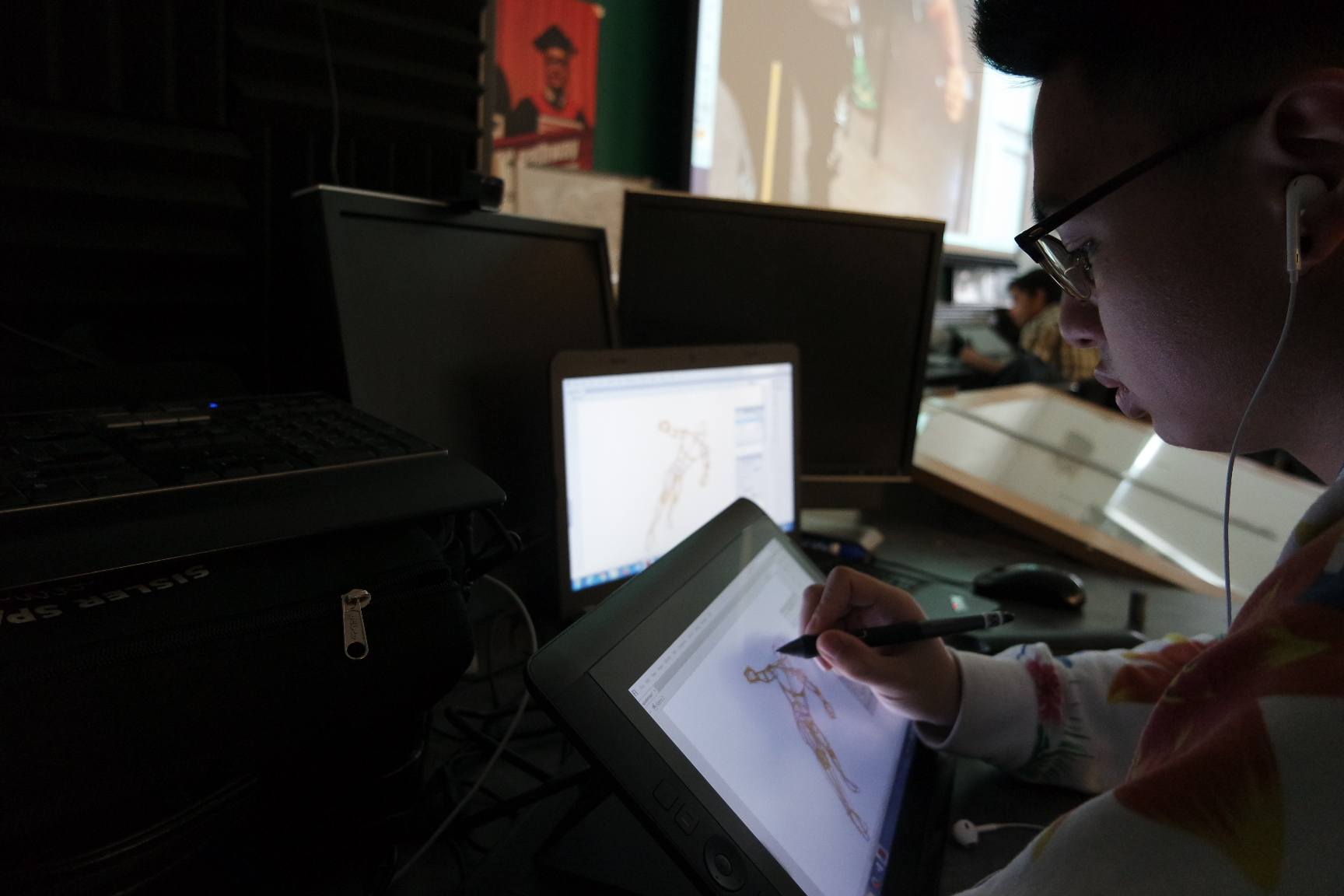How to draw Superheroes with Derek Brueckner – March 14
- Workshop Times: 9:00 am – 10:00 am CDT & 12:55 pm – 1:55 am CDT
- Google Hangout: Invite will be sent out at 8:30 am.
- How to Participate: Email us through Twitter @SislerIDM
About the Session:
- Introduction: about Derek and his work (I will briefly show some examples of student work, my work including courtroom TV drawings and few other examples of my work that is for family viewing)
- Topic: superheroes in terms of beginning with a trial and error process of drawing super heroes where we begin with the body in terms of basic shapes progressively layering the fluid line drawing with more detail in incremental stages.
- Discussion: poses with good tension and proportion and depending on response Derek may briefly discuss composition and maybe perspective.
- If time permits: If there is time Derek might also throw in a very brief cultural critique comment in regards to the super hero as a problematic signifier of hyper masculinity (and or hyper femininity) and talk about the idealized body versus the typical average person’s body and cultural representation beyond a superhero with euro-centric ancestry.
- Demo Workshop: drawing demo of beginning with a trial and error process of drawing super heroes where we begin with the body in terms of basic shapes progressively layering the line drawing with more detail in incremental stages.
- Hands-on Superhero Workshop: step by step walk through a “do as I do” lesson. We will repeat the 5 minute drawing demo with some slight changes but slowing it down considerably by stretching it out.
- Optional: There will be a discussion about fluid expressive line, variations of line weights, good tension in poses and proportions of figures. For any potential advanced drawers, Derek might offer advice on composition, perspective and context or perhaps an environment that the super hero is situated in and time permits even light and shadow.
How to draw an “Action Punching Pose”
How to draw a “Spiderman Pose”
About Derek:
Portfolio site: http://www.derekbrueckner.com
Derek Brueckner is a visual artist who works and teaches in Winnipeg, Canada. Past solo exhibitions include Plug-In ICA (Winnipeg), Ace Art Inc. (Winnipeg), Site Gallery (Winnipeg) and international group exhibitions in Italy, Chicago and New York City. Artist residencies for research have been completed in Chicago, Italy and most recently in Vermont.
Guest lectures include the School of the Art Institute of Chicago, Dominican University (Chicago) and the School of Fine Arts at the National Academy of Design (New York City) and most recently a panel discussion at the 2008 College Art Association Conference in Dallas.
Awarded grants from the Manitoba Arts Council, the Winnipeg Arts Council and the Vermont Studio Center. Reviews of work include Border Crossings, the Winnipeg Free Press, and the Globe and Mail. Education includes a BFA (Honours) from the University of Manitoba and an MFA from Hunter College, City University of New York.
Just over five years ago I began an investigation into digital media as an extension to my painting practice. During the last two years my work has primarily involved the use of a digital camera to capture still images and to digitally manipulate the images in Photoshop, which are then printed on canvas or paper.
Digital Process:
Each work entails a digital collage process of seamlessly joining numerous duplicated and mirrored fragments. In each work the fragments are sourced from the initial digital image. Each image progressively multiplies, divides, transforms, and grows, reflecting an organic process similar to cell division.
This digital process culminates into subject matter that has connotations of corporeal entities, aliens, mutation, morphing, rhizomes, fractals, kaleidoscopes, patterns, or spectacle. The work also alludes to various systems of image production that are connected to popular culture, sub-cultures, mass media, science fiction, and include art historical references of Cubism, Futurism, Surrealism, Pattern Painting and presentation formats of landscape and portraiture.
In the back of my mind during the digital manipulation process, acknowledgments of the body as a politically charged entity and other critical theories occur. Some imagery in my digital work evokes internal corporeal and microscopic journeys that are a possible metaphor for de-materialization and the internalizing of the technological into the body. As presented in works such as Bruce Back Cartogram, there can also be an external journey referencing topographical surveillance in relation to the body.
The seamless collage of duplicated and mirrored fragments may also represent the ever-increasing seamless integration of Internet capabilities and other advanced wireless technologies. The unlimited “Hyper-Real” or “Hypermodern” cultural influences of these advanced technologies simultaneously blur, multiply and rupture different senses of time and space. However during the working process, these pluralities of theories and metaphorical thought are often eclipsed by the desires for formal explorations, corporeal obsessions and utopian aspirations to subvert the Photoshop program. In the end my priorities are placed on intuitive processes, formal play, and disrupting the programfs binary system of symmetry and predictability.
In re-examining my work from the last seven years I now recognize most of that work as an assortment of hybrid versions between the technological and the physical. Borrowing from Peter Anders and his architectural theories of the “Cybrid,” I perceive my work to involve various versions of a pictorial Cybrid. I am reinterpreting Anders in conjunction with a pictorial space that is primarily associated with painting. According to Anders, the Cybrid is “an environment or artifact that incorporates both physical and cyberspaces.” Anders discusses that the Cybrid is the “threshold connection” between the physical and cyberspace.
During the last two years these prints on canvas or “cybrid paintings” have emphasized Photoshop manipulations. My future goals for the work include expanding variations of “threshold connections” by expanding the haptic options onto the digital print. It is my hope to reveal more unique combinations of painting, drawing, printmaking, photography and the digital.
















